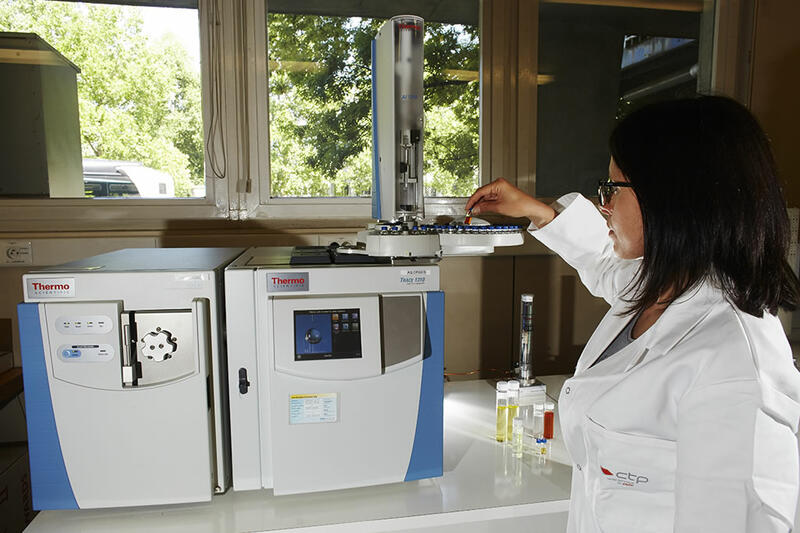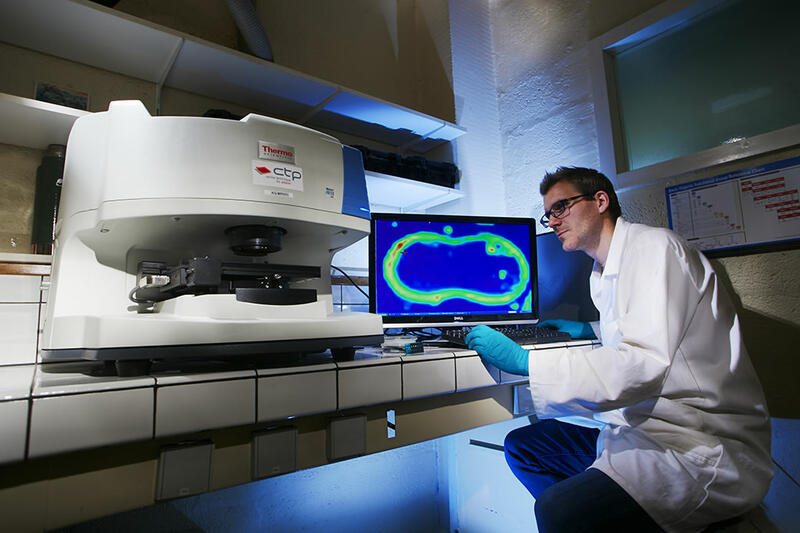
Services
Testing Laboratory
Chemical characterisation of papers and boards
Food contact, permanence of papers, hygiene
- Assist our clients with the chemical characterisation of papers and boards by proposing pertinent analyses
- Identify unknown compounds and the surface nature of paper/board materials, and determine the nature of volatile phases that can generate odour issues
- Check suitability for food contact
- Monitor the durability of your papers and boards over time (permanence)
General informations
The Chemical Analysis Laboratory draws on the wealth of industrial experience and knowledge it has gained through its R&D work to perform qualitative and quantitative assessments on a large number of substances or polymers within your material, by proposing analyses tailored specifically to papers and boards.Our state-of-the-art facilities can be used to investigate substances such as starch to within a percentage point or contaminants such as phtalates, Bisphenol A, and mineral oils at trace levels, and hence evaluate their compliance with certifications or regulations.
We have the expertise to develop, optimise and validate custom analytical methods to meet your needs or specifications.
The laboratory is actively involved in a number of standardisation committees and performs tests in compliance with the requirements of applicable regulations and standards (AFNOR, ISO, CEN, etc.).
Technical Data and Achievements
Our services are based on paper and board standards or standards from other fields that we adapt to the specific analysis of papers and boards.
Below is a list of just some of our analytical capabilities.
Chemical analyses
- Total organic chlorine (TOCl) and total chlorine (TCl) according to ISO 11480
- Sulphates according to ISO 9198
- Chlorides according to ISO 9197
- Reducible sulphur according to TAPPI T-406
- Ash content at 525°C according to ISO 1762
- Ash content at 900°C according to ISO 2144
- Measurement of minerals and metals (Ca, Fe, K, Mg, Al, etc.) by ICP-AES spectroscopy following microwave mineralisation or acid recovery from the ash.
- Measurement of the pH of a hot or cold aqueous extract according to ISO 6588-1 and -2
- Alkali reserve according to ISO 10716
- Kappa number (oxidation resistance) according to ISO 302 and Annex A of ISO 9706
- Starch according to TAPPI T-419a
- Determination of sugar content using ionic chromatography following acid hydrolysis.
Specific analyses
- Measurement of Bisphenol A, F and S according to the DGCCRF method or the INERIS method for thermal papers using liquid chromatography-mass spectrometry (LC-MS).
- Measurement of isothiazolinones (CMIT, MIT, BIT, etc.) and bronopol using liquid chromatography-mass spectrometry (LC-MS).
- Measurement of phtalates (DEHP, DIBP, DBP, etc.) following solvent extraction using gas chromatography-mass spectrometry (GC-MS).
- Measurement of DIPNs according to NF EN 14719.
- Measurement of MOSH and MOAH mineral oils according to a CTP method (see Test Sheet “MOSH and MOAH mineral oil hydrocarbons”)
Control of conformity
- Control of conformity with the paper permanence standard ISO 9706
- Conformity with the packaging and packaging waste directive 94/62/EC by measuring mercury, cadmium, chromium and lead.
Volatile phase analysis
- Screening of volatile compounds using Headspace GC/MS
- Screening of semi-volatile compounds using ATD-GC/MS.
- Semi-quantification of identified compounds in comparison with molecules from the same family.
Feel free to contact us with any enquiries regarding characterisation.
 |
 |
|
| Analysis using GC-MS chromatography | Identification using an FTIR microscope |
Also to be seen
Centre of Excellence
Testing Laboratory
Laboratories